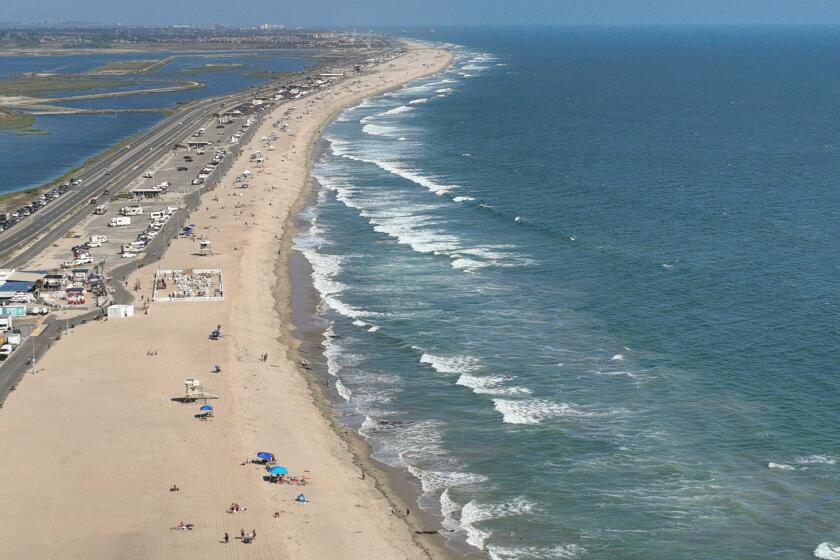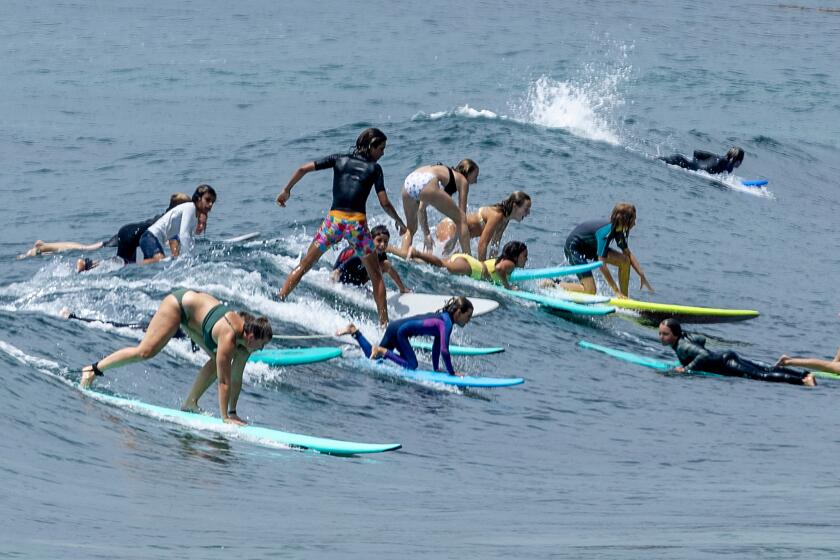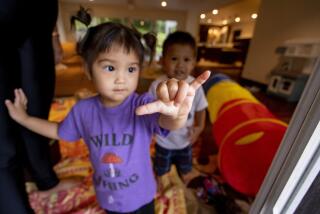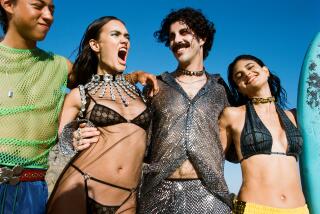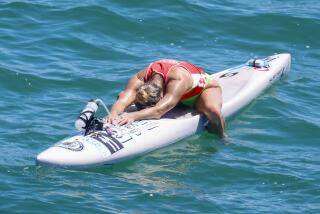Huh? What surfers mean when they’re frothing and charging at the Olympics or at home
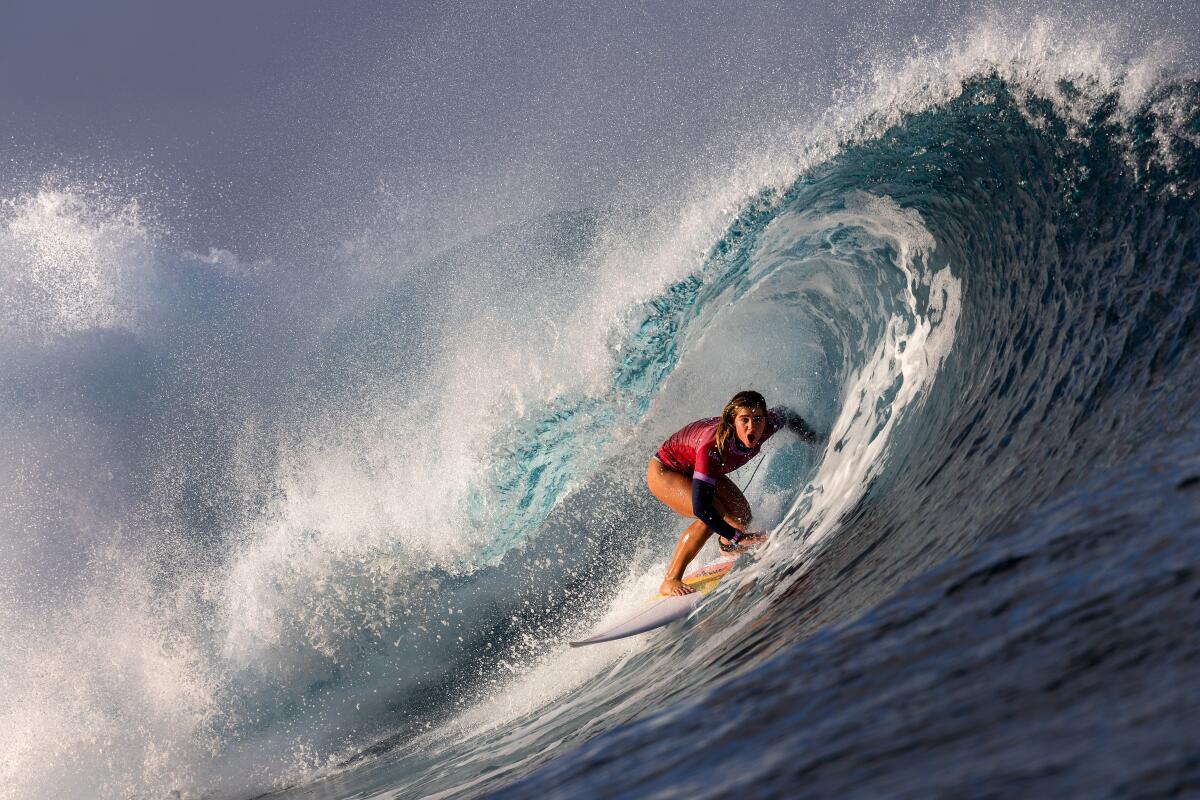
Some things are inevitable when surfing in Southern California: It can feel like an exclusive club, you may have to battle traffic to get to the good waves, and overhearing a very specific, and sometimes confusing, dialogue.
When you paddle out, it’s as though you’ve entered a new world with its own language that might sound like: “Did you see that kook? He snaked me on such a gnarly wave!”
No, this is not Gen Z-speak. No “rizz” is to be found, no cap, and while what surfers might say in the water to each other may be “sus,” you’re more likely to hear “gnarly” intertwined with “drop-in” or “barrel.”
Like every generation has its slang, so do surfers and, my, how it has evolved over the decades. Some surfer lingo — like stoked — has even seeped into Southern California non-surf-related parlance, but that depends on how close you are to the coast.
“Surfing does seem to have this other layer of words that are special to us,” said Matt Warshaw, author of the “Encyclopedia of Surfing” and “The History of Surfing.” “There’s also sort of a cadence to it. It’s also trying to decode what level of irony we are throwing out there.”
We visited more than 200 miles of coastline, picking through hundreds of beaches to name the 50 best from San Diego to Santa Barbara. We prioritized ease of use and special amenities — like volleyball courts, camping, surf conditions and views.
If you tuned into the Olympic surfing competition at Tahiti’s Teahupo’o, you may have noticed that the commentators are keenly aware of the subculture’s language eccentricities. They are graciously explaining surf maneuvers and terms to a global audience.
If you’re interested in joining the club or want to better navigate the lineup, knowing these words might mean the difference between a good surf experience and a bad one. In between waiting for waves, here are a few common surf terms we’ve overheard recently:
A-frame wave, n.
Used to describe a wave that breaks in the shape of an “A” and often referred to as a “peaky wave,” A-frames allow surfers to ride the breaking wave in both directions or split the peak. A-frame waves can occur almost anywhere, but more often than not they occur at sandy beaches during the right surf conditions.
Barrel, n. and v.
A barrel is used to describe a hollow, more powerful wave and the act of surfing inside the hollow section of a wave.
If you watched some of this year’s Olympic surfing competition at Tahiti’s Teahupo’o, you may have noticed the lip of the wave pitches and forms a hollowed-out curl. This is referred to as a barrel and is one of the most highly sought-after surfing experiences. When the right swell breaks over its very shallow reef, Teahupo’o is one of the most dangerous barrel rides in the world.
Charging, v. Often used to describe a surfer aggressively paddling for bigger waves and putting all their effort into catching those waves, charging can be used as a compliment from one surfer to another, like: “I saw you charging that big wave!”
Dropping in, v. Dropping in is often used to reference a surfer cutting off another who is already riding the wave. This action is referencing a surf etiquette violation and often leads to frustration.
Gnarly, adj. Originally from the word “gnarled” meaning rough or twisted, surfers adapted this word in the 1970s to describe a situation that can be seen as extreme such as riding an intimidating wave, said Warshaw.
“That’s one we didn’t make up, but we certainly adapted for our own use,” said Warshaw, recalling a 1972 Surfer Magazine photo caption of a “horrific looking wave” that first used the word. ”It’s a perfect way to describe … the kind of waves that we look at and ride. Apply that to any situation that is a little bit hairy,” he said.
Two of the five athletes on the U.S. Olympic surf team hail from San Clemente; a third lives in Oceanside. They will compete in massive, barreling swells in Tahiti, a bold choice that has some safety-conscious experts shaking their heads.
Kook, n. Occasionally spelled “kuk,” this word is often used by surfers to describe a less experienced surfer. Arguably one of the most derogatory terms in the surf world, kook has origins in the Hawaiian word “kukae,” which means crap. The word describes a surfer who doesn’t understand surf etiquette or has a poor attitude.
“Sometimes I’ll say it if other people in the lineup have no idea what they’re doing … that’s how surfing is unfortunately,” said Joseph Barber, a recreational surfer from San Clemente. “[The waves are] a scarce resource, and when you add a lot of people who don’t know what they’re doing, it gets intense.”
Lineup, n. This refers to the area just beyond the breaking waves where surfers are waiting for waves. These spots can vary in size and, depending on the swell, are the official locations where people must paddle out to catch waves and wait their turn.
Pearling, v. When a surfer puts too much weight at the front of their board, the tip of the board will submerge in the water, often resulting in the surfer flailing or falling off their board. Akin to pearl diving, said Warshaw, the term is reminiscent of a person diving from a boat or pier.
It can get rough and tumble on the waves as more and more surfers crowd SoCal beaches. Before paddling out, learn etiquette tips every surfer should know.
Shaka, v. The hand gesture most closely associated with surf culture, shaka is formed by making a fist with the thumb and pinky fingers extended. Though the gesture is closely associated with Hawaiian surf culture in the 1970s, the Oxford English Dictionary says it potentially has Japanese roots.
“If a camera comes out, my hand almost automatically goes up into that [gesture], even though it looks sort of silly. It’s basically just a greeting,” said Warshaw. “The thing that used to go with shaka is ‘howzit.’ ”
Along with shaka, howzit is a Hawaiian slang term for “how’s it going.”
Stoked, n. Stoked means to feed a fire, and in surfer language, it is an expression of pure excitement and the satisfaction one may feel after catching a good wave or completing a difficult maneuver. According to the Encyclopedia of Surfing, surfers began using this expression in the 1950s and has been a common expression both in and out of the water ever since.
“When surfers are feeling excited to surf, they might say, ‘I’m so stoked,’ ‘I’m psyching’ or, my personal favorite, ‘I’m frothing,’ ” said Kevin Tran, a recreational surfer from San Clemente.
As you paddle out to the lineup, remember that surfing is more than just riding waves — it’s a community with its own subculture that can vary from locale to locale. Whether you’re frothing for the next set wave or just stoked to be part of the scene, understanding the language — and of course, surf etiquette — will help you navigate the surf with more confidence.
More to Read
Sign up for The Wild
We’ll help you find the best places to hike, bike and run, as well as the perfect silent spots for meditation and yoga.
You may occasionally receive promotional content from the Los Angeles Times.
